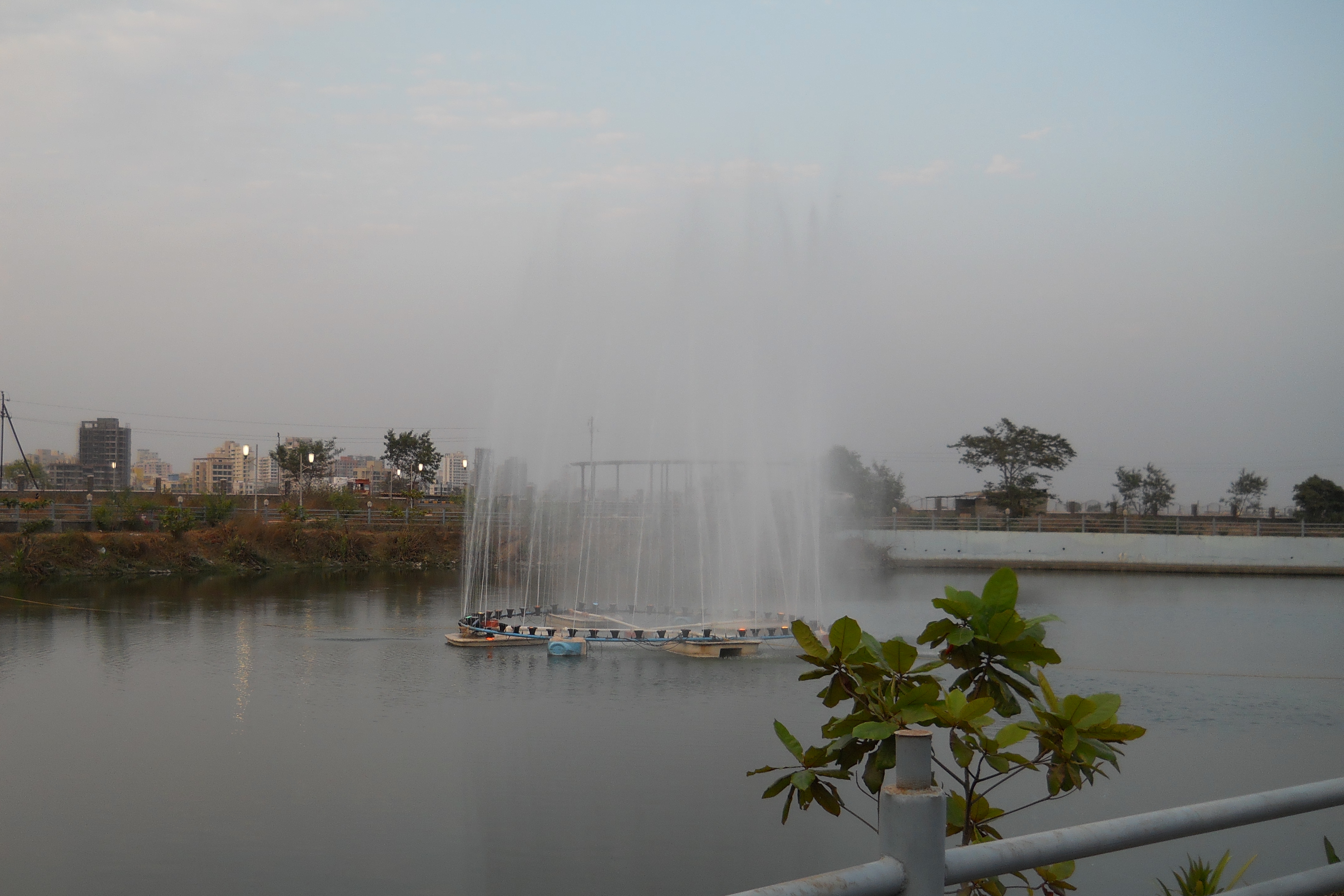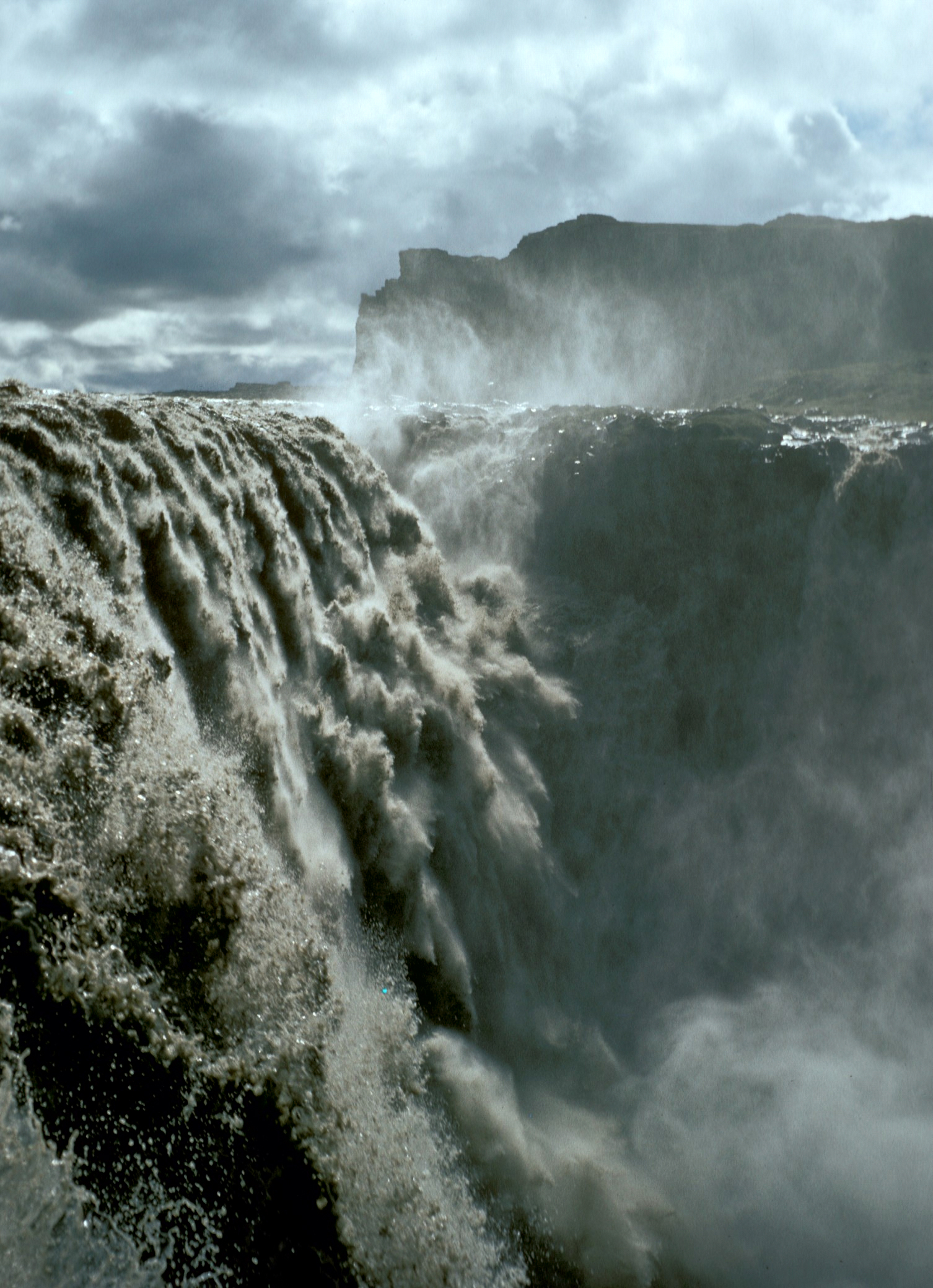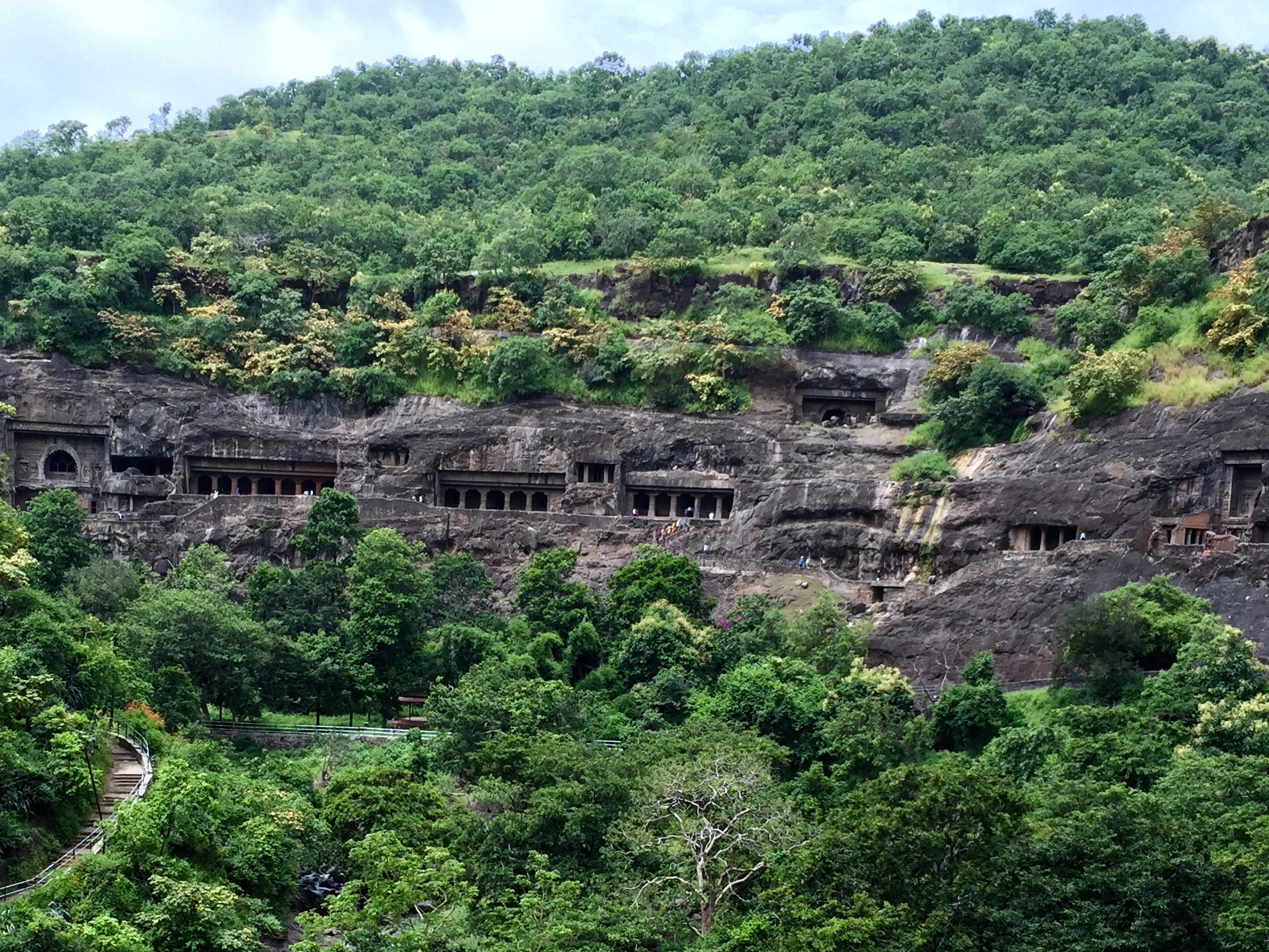|
Pandavkada Falls
Pandavkada Falls is a waterfall located Kharghar, a suburb of Navi Mumbai. The waterfall, about 107 metres high is a type of 'plunge' waterfall in nature pouring in massive amounts of water on the rocky surface underneath. History Pandavkada is said to have derived its name from the Pandavas, who had once visited the place and took bath below the falls when they were exiled in the forests as per Hindu traditional legends. And within pandavkada is a big tunnel from where pandavas had come, that's why it is known as pandavkada. Location Pandavkada Waterfalls is located in Kharghar, go by bus Bathing Pandavkada waterfall is being declared as a dangerous spot by the CIDCO The City and Industrial Development Corporation of Maharashtra (CIDCO) is an Indian city planning agency and richest government authority in India which is formed and controlled by the Government of Maharashtra. CIDCO was formed on 17 March 197 .... In 2010, about 12 students had lost their lives while swimm ... [...More Info...] [...Related Items...] OR: [Wikipedia] [Google] [Baidu] |
Kharghar
Kharghar is a node of Navi Mumbai and it is a suburb under Panvel Municipal Corporation. It is situated at the northernmost tip of Raigad district. It was developed by the City and Industrial Development Corporation (CIDCO). Kharghar is now administered by recently established Panvel Municipal Corporation. Prashant Thakur, MLA represents Kharghar in the State Legislative Assembly as part of Panvel constituency. Kharghar is also developed as Education Hub of Navi Mumbai as many prominent schools and colleges are present in Kharghar Node. Transportation Navi Mumbai Metro After years of delay, CIDCO recently issued a press release stating they were confident of kick-starting partial services of the Navi Mumbai Metro in December 2021. In October 2021, the Navi Mumbai Metro received an Interim Speed Certificate by the Research Design and Standards Organisation (RDSO) based on successful trials on Line-1 connecting the Central Park metro station to the Pendhar metro station, which str ... [...More Info...] [...Related Items...] OR: [Wikipedia] [Google] [Baidu] |
Navi Mumbai
Navi Mumbai (), is a planned city situated on the west coast of the Indian subcontinent, located in the Konkan division of Maharashtra state, on the mainland of India. Navi Mumbai is part of the Mumbai Metropolitan Region (MMR). The city is divided into two, North Navi Mumbai and South Navi Mumbai, for the individual development of Panvel Mega City, which includes the area from Kharghar to Uran, including the Taloja node. The Agri and Koli Communities mainly reside in Navi Mumbai. Navi Mumbai was the host city for the inaugural final of the IPL (2008) at DY Patil Stadium. Thane Belapur Marg and Palm Beach Marg are major business attraction and upmarket residential areas respectively. Navi Mumbai has a population of 1,119,477 as per the 2011 provisional census. It has an average city elevation of 14 meters, excluding forest area. The city's or area history dates back to the late 1500s when Siddis of Janjira built the Belapur Killa located atop a hillock, near the mouth ... [...More Info...] [...Related Items...] OR: [Wikipedia] [Google] [Baidu] |
Raigad District
Raigad district (Marathi pronunciation: Help:IPA/Marathi, [ɾaːjɡəɖ]), previously Colaba fort, Colaba district, is a district in the Konkan division of Maharashtra, India. The district was renamed to Raigad fort, Raigad after the fort that was the first capital of the former Maratha Empire, which in turn was renamed from its earlier name - Rairi. The fort is located in the interior regions of the district, in dense forests on a west-facing spur of the Western Ghats of Sahyadri Range. In 2011 the district had a population of 2,634,200, compared to 2,207,929 in 2001. The name was changed in the regime of Chief Minister A. R. Antulay on 1 January 1981. In 2011 urban dwellers had increased to 36.91% from 24.22% in 2001. Alibag is the headquarters of Raigad district. Raigad district's neighbouring districts are Mumbai, Thane districts on North, Pune district on East, Satara district on South East, Ratnagiri district is present on South side and Arabian sea on West. History Kula ... [...More Info...] [...Related Items...] OR: [Wikipedia] [Google] [Baidu] |
India
India, officially the Republic of India (Hindi: ), is a country in South Asia. It is the seventh-largest country by area, the second-most populous country, and the most populous democracy in the world. Bounded by the Indian Ocean on the south, the Arabian Sea on the southwest, and the Bay of Bengal on the southeast, it shares land borders with Pakistan to the west; China, Nepal, and Bhutan to the north; and Bangladesh and Myanmar to the east. In the Indian Ocean, India is in the vicinity of Sri Lanka and the Maldives; its Andaman and Nicobar Islands share a maritime border with Thailand, Myanmar, and Indonesia. Modern humans arrived on the Indian subcontinent from Africa no later than 55,000 years ago., "Y-Chromosome and Mt-DNA data support the colonization of South Asia by modern humans originating in Africa. ... Coalescence dates for most non-European populations average to between 73–55 ka.", "Modern human beings—''Homo sapiens''—originated in Africa. Then, int ... [...More Info...] [...Related Items...] OR: [Wikipedia] [Google] [Baidu] |
Waterfall
A waterfall is a point in a river or stream where water flows over a vertical drop or a series of steep drops. Waterfalls also occur where meltwater drops over the edge of a tabular iceberg or ice shelf. Waterfalls can be formed in several ways, but the most common method of formation is that a river courses over a top layer of resistant bedrock before falling on to softer rock, which Erosion, erodes faster, leading to an increasingly high fall. Waterfalls have been studied for their impact on species living in and around them. Humans have had a distinct relationship with waterfalls for years, travelling to see them, exploring and naming them. They can present formidable barriers to navigation along rivers. Waterfalls are religious sites in many cultures. Since the 18th century they have received increased attention as tourist destinations, sources of hydropower, andparticularly since the mid-20th centuryas subjects of research. Definition and terminology A waterfall is gen ... [...More Info...] [...Related Items...] OR: [Wikipedia] [Google] [Baidu] |
Pandavas
The Pandavas (Sanskrit: पाण्डव, IAST: Pāṇḍava) refers to the five legendary brothers— Yudhishthira, Bhima, Arjuna, Nakula and Sahadeva—who are the central characters of the Hindu epic ''Mahabharata''. They are acknowledged as the sons of Pandu, the King of Kuru, but were fathered by different ''Devas'' (gods) due to Pandu's inability to naturally conceive children. In the epic, the Pandavas married Draupadi, the princess of Panchala, and founded the city of Indraprastha after the Kuru Kingdom was split to avoid succession disputes. After their paternal cousins the Kauravas—led by Duryodhana—tricked them into surrendering their kingdom and refused to return it, the Pandavas waged a civil war against their extended family, and this conflict was known as the Kurukshetra War. With the help of the god Krishna, the Pandavas eventually won the war with the death of the Kauravas, albeit at great cost. Etymology The word ''Pandava'' ( sa, पाण्ड� ... [...More Info...] [...Related Items...] OR: [Wikipedia] [Google] [Baidu] |
Hindu Traditional Legends
Hindus (; ) are people who religiously adhere to Hinduism.Jeffery D. Long (2007), A Vision for Hinduism, IB Tauris, , pages 35–37 Historically, the term has also been used as a geographical, cultural, and later religious identifier for people living in the Indian subcontinent. The term ''"Hindu"'' traces back to Old Persian which derived these names from the Sanskrit name ''Sindhu'' (सिन्धु ), referring to the river Indus. The Greek cognates of the same terms are "''Indus''" (for the river) and "''India''" (for the land of the river). The term "''Hindu''" also implied a geographic, ethnic or cultural identifier for people living in the Indian subcontinent around or beyond the Sindhu (Indus) River. By the 16th century CE, the term began to refer to residents of the subcontinent who were not Turkic or Muslims. Hindoo is an archaic spelling variant, whose use today is considered derogatory. The historical development of Hindu self-identity within the local ... [...More Info...] [...Related Items...] OR: [Wikipedia] [Google] [Baidu] |
City And Industrial Development Corporation
The City and Industrial Development Corporation of Maharashtra (CIDCO) is an Indian city planning agency and richest government authority in India which is formed and controlled by the Government of Maharashtra. CIDCO was formed on 17 March 1970 under the Indian Companies Act of 1956; its purpose at the time of its creation was to develop a satellite town to Mumbai, Mumbai, Maharashtra, and now functioning as New Town Development Authority (NTDA) and Special Planning Authority (SPA) of Government of Maharashtra for development of new towns by planning and developing entire urban infrastructure, providing municipal services, executing large scale infrastructure projects including Navi Mumbai International Airport and the Navi Mumbai Metro. CIDCO also launched India's first smart city project. CIDCO has ownership of all plots in new cities, underutilised funds about Rs 40,000 crore and reserved Land banking, Land Bank; which makes CIDCO richest Government Authority. The Navi Mumba ... [...More Info...] [...Related Items...] OR: [Wikipedia] [Google] [Baidu] |
Ministry Of Environment And Forests (India)
The Ministry of Environment, Forest and Climate Change (MoEFCC) is an Indian government ministry. This ministry is headed by Secretary Rank senior most IAS officer. The ministry portfolio is currently held by Bhupender Yadav, Union Minister of Environment, Forest and Climate Change. The ministry is responsible for planning, promoting, coordinating, and overseeing the implementation of environmental and forestry programmes in the country. The main activities undertaken by the ministry include conservation and survey of the flora of India and fauna of India, forests and other wilderness areas; prevention and control of pollution; Indian Himalayan Environment and its sustainable development; afforestation, and land degradation mitigation. It is responsible for the administration of the 1947 national parks of India. The Ministry of Environment, Forest and Climate Change is the cadre controlling authority of the Indian Forest Service (IFS), one of the three All India Services. His ... [...More Info...] [...Related Items...] OR: [Wikipedia] [Google] [Baidu] |
Waterfalls Of Maharashtra
A waterfall is a point in a river or stream where water flows over a vertical drop or a series of steep drops. Waterfalls also occur where meltwater drops over the edge of a tabular iceberg or ice shelf. Waterfalls can be formed in several ways, but the most common method of formation is that a river courses over a top layer of resistant bedrock before falling on to softer rock, which erodes faster, leading to an increasingly high fall. Waterfalls have been studied for their impact on species living in and around them. Humans have had a distinct relationship with waterfalls for years, travelling to see them, exploring and naming them. They can present formidable barriers to navigation along rivers. Waterfalls are religious sites in many cultures. Since the 18th century they have received increased attention as tourist destinations, sources of hydropower, andparticularly since the mid-20th centuryas subjects of research. Definition and terminology A waterfall is generally d ... [...More Info...] [...Related Items...] OR: [Wikipedia] [Google] [Baidu] |
Buddhist Caves In India
The Buddhist caves in India. Maharashtra state Aurangabad Dist. Ellora caves form an important part of Indian rock-cut architecture, and are among the most prolific examples of rock-cut architecture around the world. There are more than 1,500 known rock cut structures in India, out of which about 1000 were made by Buddhists (mainly between 200 BCE and 600 CE), 300 by Hindus (from 600 CE to 1200 CE), and 200 by Jains (from 800 CE to 1200 CE). Many of these structures contain works of art of global importance, and many later caves from the Mahayana period are adorned with exquisite stone carvings. These ancient and medieval structures represent significant achievements of structural engineering and craftsmanship. In India, caves have long been regarded as places of sanctity. Caves that were enlarged or entirely man-made were felt to hold the same sanctity as natural caves. In fact, the sanctuary in all Indian religious structures, even free-standing ones, retains the same cave-like fe ... [...More Info...] [...Related Items...] OR: [Wikipedia] [Google] [Baidu] |



.jpg)
.jpg)

